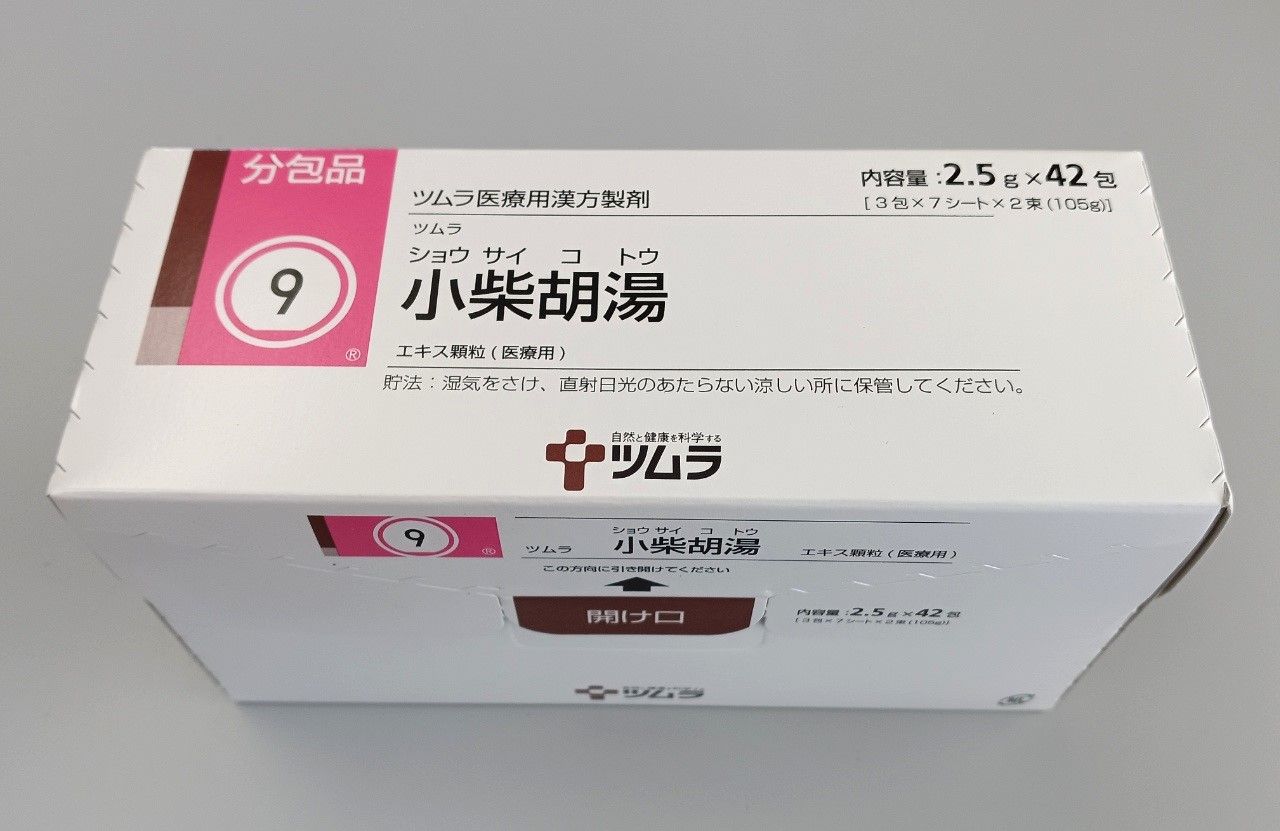
Since traditional Chinese medicine was introduced to Japan in the early 5th century, it has been widely applied in clinical practice and has continued to develop to this day. As Japanese medical doctor Masatoshi Yamazaki stated, “From the Emperor to the general public, everyone gladly accepts Kampo treatment; Kampo medicine is the mainstream of Japanese healthcare.” This perspective aptly reflects the important position of Chinese herbal formulas within the Japanese medical system.
Shosaikoto: From Shanghan Lun to Modern Medicine
Shosaikoto (Xiao Chai Hu Tang) was first recorded in the Shanghan Lun (Treatise on Cold Damage), written 2,000 years ago. It was indicated for symptoms such as “cold damage on the fifth or sixth day, alternating chills and fever, fullness and discomfort in the chest and hypochondrium, silent reluctance to eat or drink, irritability with nausea,” among others. Its long history of clinical use not only proves its efficacy but also spurred ongoing research and innovation in Japan.
Dr. Yamazaki noted that Shosaikoto not only treats Shaoyang syndrome caused by external pathogens but also plays a unique role in regulating the body's homeostasis. For example, it works by “cooling when hot, warming when cold,” balancing body temperature and regulating internal environment indicators like blood pressure, blood sugar, and osmotic pressure to achieve comprehensive improvement.
Pharmacological Mechanism
Modern studies suggest that the “alternating chills and fever” characteristic of Shaoyang syndrome relates to the increase of endogenous pyrogens (toxins). Bupleurum (Chai Hu) and Scutellaria (Huang Qin) detoxify, enhance immunity, and eliminate pyrogens to normalize body temperature. Pinellia (Ban Xia) and ginger (Sheng Jiang) stop vomiting, while ginseng (Ren Shen), jujube (Da Zao), and licorice (Gan Cao) invigorate vital energy and harmonize organ functions.
Current Prescription Composition in Japan:
Bupleurum (Chai Hu) 7g
Scutellaria (Huang Qin) 3g
Pinellia (Ban Xia) 5g
Ginseng (Ren Shen) 3g
Jujube (Da Zao) 3g
Ginger (Sheng Jiang) 4g
Licorice (Gan Cao) 2g
This formula balances ascending and descending, cold and heat, embodying the “harmonizing Shaoyang” treatment principle.
Broad Clinical Applications of Shosaikoto in Japan
Respiratory Diseases
Bronchial asthma, chronic bronchitis
Dr. Ryoto Awazu treated 137 respiratory disease patients; 12 were treated solely with Shosaikoto with significant effect.
Pediatric asthmatic bronchitis improved significantly with combined Shosaikoto and Hange-Koboku-To treatment.
For colds with mild headache and fever and wiry thin pulse, Shosaikoto is recommended; if accompanied by cough and vomiting, it can be combined with Shoseiryuto.
Liver and Gallbladder Diseases
Chronic hepatitis: Bupleurum has anti-inflammatory effects, lowers GOT and GPT enzymes, and promotes liver function recovery. Kinki University combined Shosaikoto with Keishi-Bukuryo-Gan to cure chronic active hepatitis after 6 months.
Fatty liver: Kitasato Institute found Shosaikoto effectively inhibits hepatic cell infiltration, with excellent results combined with other formulas.
Cardiovascular Diseases
Hypertension, palpitations: Shosaikoto used for patients with chest and hypochondrium fullness and wiry pulse; combined with Ling-Gui-Zhu-Gan-Tang effectively treats arrhythmia.
Neurological Disorders
Epilepsy: Bupleurum and ginger suppress epileptiform activity, exerting central and peripheral sedative effects. One child with 4 years of seizures was almost seizure-free after 6 months of combined Shosaikoto and Keishi-Tang treatment, and fully recovered after another 6 months.
Urinary System Diseases
Nephritis and nocturnal enuresis: Effective treatment reported using Shosaikoto combined with Coptis, Poria, and Uncaria for nephritis; combined with Keishi-Ka-Shakuyaku-To and Shokenchu-To for children’s enuresis achieved full cure.
Otorhinolaryngology
Chronic rhinitis and otitis media: Good effects with combined Xiangsu San, Yinchen, and Gardenia; otorrhea patients recovered in about a month with added Platycodon and Gypsum.
Tonsillitis: Rapid relief of gland enlargement and recurrent fever with Shosaikoto.
Trauma
Trauma may cause non-physiological blood stasis and toxin formation damaging liver, kidneys, lungs, and stomach. Bupleurum formulas reduce liver and gallbladder burden, promoting detoxification.
A traffic accident patient treated with Shosaikoto and Keishi-Rei-To for 3 months had complete relief of headache, tinnitus, and insomnia.
Other Diseases
Tuberculous lymphadenitis, diabetes, gynecological blood stasis, urticaria, eye fatigue, and myopia also show reported efficacy, illustrating Shosaikoto’s wisdom in targeting individual symptom patterns.
Conclusion
As a key formula for harmonizing Shaoyang, Shosaikoto has been widely used since ancient times. The Shanghan Lun includes 23 main articles and over 60 related prescriptions, all highly esteemed by medical practitioners throughout history. Qing dynasty scholar Xu Lingtai said, “Its applications are numerous; if one deeply studies its principles, new insights will emerge.”
In Japan, Shosaikoto’s diverse clinical applications embody a profound understanding and modern transformation of ancient wisdom. This reminds us that the vitality of classical Chinese herbal formulas continues to transcend time and space, benefiting many patients worldwide.
